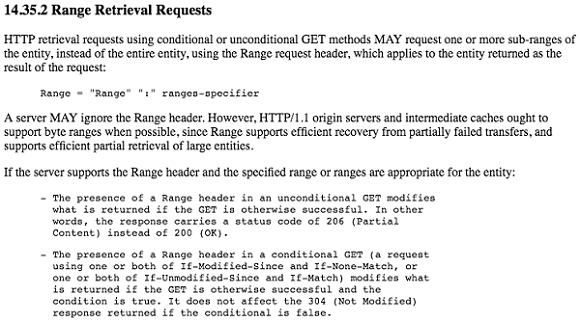Method Swizzling和AOP(面向切面編程)實踐
上一篇介紹了 Objective-C Messaging。利用 Objective-C 的 Runtime 特性,我們可以給語言做擴展,幫助解決項目開發中的一些設計和技術問題。這一篇,我們來探索一些利用 Objective-C Runtime 的黑色技巧。這些技巧中最具爭議的或許就是 Method Swizzling 。
介紹一個技巧,最好的方式就是提出具體的需求,然後用它跟其他的解決方法做比較。
所以,先來看看我們的需求:對 App 的用戶行為進行追蹤和分析。簡單說,就是當用戶看到某個 View 或者點擊某個 Button 的時候,就把這個事件記下來。
手動添加
最直接粗暴的方式就是在每個 viewDidAppear 裡添加記錄事件的代碼。
@implementation MyViewController ()- (void)viewDidAppear:(BOOL)animated
{
[super viewDidAppear:animated]; // Custom code
// Logging
[Logging logWithEventName:@“my view did appear”];
}
- (void)myButtonClicked:(id)sender
{ // Custom code
// Logging
[Logging logWithEventName:@“my button clicked”];
}這種方式的缺點也很明顯:它破壞了代碼的干淨整潔。因為 Logging 的代碼本身並不屬於ViewController 裡的主要邏輯。隨著項目擴大、代碼量增加,你的 ViewController 裡會到處散布著 Logging 的代碼。這時,要找到一段事件記錄的代碼會變得困難,也很容易忘記添加事件記錄的代碼。
你可能會想到用繼承或者類別,在重寫的方法裡添加事件記錄的代碼。比如用類別的代碼大概長這個樣子:
@implementation UIViewController (Logging)- (void)viewDidAppear:(BOOL)animated
{
[super viewDidAppear:animated]; // Custom code
// Logging
[Logging logWithEventName:NSStringFromClass([self class])];
}
- (void)myButtonClicked:(id)sender
{ // Custom code
// Logging
NSString *name = [NSString stringWithFormat:@“my button in %@ is clicked”, NSStringFromClass([self class])];
[Logging logWithEventName:name];
}Logging 的代碼都很相似,通過繼承或類別重寫相關方法是可以把它從主要邏輯中剝離出來。但同時也帶來新的問題:
1.你需要繼承 UIViewController, UITableViewController, UICollectionViewController 所有這些 ViewController ,或者給他們添加類別;
2.每個 ViewController 裡的 ButtonClick 方法命名不可能都一樣;
3.你不能控制別人如何去實例化你的子類;
4.對於類別,你沒辦法調用到原來的方法實現。大多時候,我們重寫一個方法只是為了添加一些代碼,而不是完全取代它。
5.如果有兩個類別都實現了相同的方法,運行時沒法保證哪一個類別的方法會給調用。
Method Swizzling
Method Swizzling 利用 Runtime 特性把一個方法的實現與另一個方法的實現進行替換。
上一篇文章有講到每個類裡都有一個 Dispatch Table ,將方法的名字(SEL)跟方法的實現(IMP,指向 C 函數的指針)一一對應。Swizzle 一個方法其實就是在程序運行時在 Dispatch Table 裡做點改動,讓這個方法的名字(SEL)對應到另個 IMP 。
首先定義一個類別,添加將要 Swizzled 的方法:
@implementation UIViewController (Logging)- (void)swizzled_viewDidAppear:(BOOL)animated
{ // call original implementation
[self swizzled_viewDidAppear:animated]; // Logging
[Logging logWithEventName:NSStringFromClass([self class])];
}代碼看起來可能有點奇怪,像遞歸不是麼。當然不會是遞歸,因為在 runtime 的時候,函數實現已經被交換了。調用 viewDidAppear: 會調用你實現的 swizzled_viewDidAppear:,而在 swizzled_viewDidAppear: 裡調用 swizzled_viewDidAppear: 實際上調用的是原來的 viewDidAppear: 。
接下來實現 swizzle 的方法 :
@implementation UIViewController (Logging)void swizzleMethod(Class class, SEL originalSelector, SEL swizzledSelector) { // the method might not exist in the class, but in its superclass
Method originalMethod = class_getInstanceMethod(class, originalSelector);
Method swizzledMethod = class_getInstanceMethod(class, swizzledSelector); // class_addMethod will fail if original method already exists
BOOL didAddMethod = class_addMethod(class, originalSelector, method_getImplementation(swizzledMethod), method_getTypeEncoding(swizzledMethod)); // the method doesn’t exist and we just added one
if (didAddMethod) {
class_replaceMethod(class, swizzledSelector, method_getImplementation(originalMethod), method_getTypeEncoding(originalMethod));
}
else {
method_exchangeImplementations(originalMethod, swizzledMethod);
}
}這裡唯一可能需要解釋的是 class_addMethod 。要先嘗試添加原 selector 是為了做一層保護,因為如果這個類沒有實現 originalSelector ,但其父類實現了,那 class_getInstanceMethod 會返回父類的方法。這樣 method_exchangeImplementations 替換的是父類的那個方法,這當然不是你想要的。所以我們先嘗試添加 orginalSelector ,如果已經存在,再用 method_exchangeImplementations 把原方法的實現跟新的方法實現給交換掉。
最後,我們只需要確保在程序啟動的時候調用 swizzleMethod 方法。比如,我們可以在之前 UIViewController 的 Logging 類別裡添加 +load: 方法,然後在 +load: 裡把 viewDidAppear 給替換掉:
@implementation UIViewController (Logging)+ (void)load
{
swizzleMethod([self class], @selector(viewDidAppear:), @selector(swizzled_viewDidAppear:));
}一般情況下,類別裡的方法會重寫掉主類裡相同命名的方法。如果有兩個類別實現了相同命名的方法,只有一個方法會被調用。但 +load: 是個特例,當一個類被讀到內存的時候, runtime 會給這個類及它的每一個類別都發送一個 +load: 消息。
其實,這裡還可以更簡化點:直接用新的 IMP 取代原 IMP ,而不是替換。只需要有全局的函數指針指向原 IMP 就可以。
void (gOriginalViewDidAppear)(id, SEL, BOOL);void newViewDidAppear(UIViewController *self, SEL _cmd, BOOL animated)
{ // call original implementation
gOriginalViewDidAppear(self, _cmd, animated); // Logging
[Logging logWithEventName:NSStringFromClass([self class])];
}
+ (void)load
{
Method originalMethod = class_getInstanceMethod(self, @selector(viewDidAppear:));
gOriginalViewDidAppear = (void *)method_getImplementation(originalMethod); if(!class_addMethod(self, @selector(viewDidAppear:), (IMP) newViewDidAppear, method_getTypeEncoding(originalMethod))) {
method_setImplementation(originalMethod, (IMP) newViewDidAppear);
}
}通過 Method Swizzling ,我們成功把邏輯代碼跟處理事件記錄的代碼解耦。當然除了 Logging ,還有很多類似的事務,如 Authentication 和 Caching。這些事務瑣碎,跟主要業務邏輯無關,在很多地方都有,又很難抽象出來單獨的模塊。這種程序設計問題,業界也給了他們一個名字 - Cross Cutting Concerns。
而像上面例子用 Method Swizzling 動態給指定的方法添加代碼,以解決 Cross Cutting Concerns 的編程方式叫:Aspect Oriented Programming
Aspect Oriented Programming (面向切面編程)
Wikipedia 裡對 AOP 是這麼介紹的:
An aspect can alter the behavior of the base code by applying advice (additional behavior) at various join points (points in a program) specified in a quantification or query called a pointcut (that detects whether a given join point matches).
在 Objective-C 的世界裡,這句話意思就是利用 Runtime 特性給指定的方法添加自定義代碼。有很多方式可以實現 AOP ,Method Swizzling 就是其中之一。而且幸運的是,目前已經有一些第三方庫可以讓你不需要了解 Runtime ,就能直接開始使用 AOP 。
Aspects 就是一個不錯的 AOP 庫,封裝了 Runtime , Method Swizzling 這些黑色技巧,只提供兩個簡單的API:
+ (id)aspect_hookSelector:(SEL)selector withOptions:(AspectOptions)options usingBlock:(id)block error:(NSError **)error;- (id)aspect_hookSelector:(SEL)selector withOptions:(AspectOptions)options usingBlock:(id)block error:(NSError **)error;
使用 Aspects 提供的 API,我們之前的例子會進化成這個樣子:
@implementation UIViewController (Logging)+ (void)load
{
[UIViewController aspect_hookSelector:@selector(viewDidAppear:)
withOptions:AspectPositionAfter
usingBlock:^(id aspectInfo) { NSString *className = NSStringFromClass([[aspectInfo instance] class]);
[Logging logWithEventName:className];
} error:NULL];
}你可以用同樣的方式在任何你感興趣的方法裡添加自定義代碼,比如 IBAction 的方法裡。更好的方式,你提供一個 Logging 的配置文件作為唯一處理事件記錄的地方:
@implementation AppDelegate (Logging)+ (void)setupLogging
{ NSDictionary *config = @{ @"MainViewController": @{
GLLoggingPageImpression: @"page imp - main page",
GLLoggingTrackedEvents: @[
@{
GLLoggingEventName: @"button one clicked",
GLLoggingEventSelectorName: @"buttonOneClicked:",
GLLoggingEventHandlerBlock: ^(id aspectInfo) {
[Logging logWithEventName:@"button one clicked"];
},
},
@{
GLLoggingEventName: @"button two clicked",
GLLoggingEventSelectorName: @"buttonTwoClicked:",
GLLoggingEventHandlerBlock: ^(id aspectInfo) {
[Logging logWithEventName:@"button two clicked"];
},
},
],
}, @"DetailViewController": @{
GLLoggingPageImpression: @"page imp - detail page",
}
};
[AppDelegate setupWithConfiguration:config];
}
+ (void)setupWithConfiguration:(NSDictionary *)configs
{ // Hook Page Impression
[UIViewController aspect_hookSelector:@selector(viewDidAppear:)
withOptions:AspectPositionAfter
usingBlock:^(id aspectInfo) { NSString *className = NSStringFromClass([[aspectInfo instance] class]);
[Logging logWithEventName:className];
} error:NULL]; // Hook Events
for (NSString *className in configs) {
Class clazz = NSClassFromString(className); NSDictionary *config = configs[className]; if (config[GLLoggingTrackedEvents]) { for (NSDictionary *event in config[GLLoggingTrackedEvents]) {
SEL selekor = NSSelectorFromString(event[GLLoggingEventSelectorName]);
AspectHandlerBlock block = event[GLLoggingEventHandlerBlock];
[clazz aspect_hookSelector:selekor
withOptions:AspectPositionAfter
usingBlock:^(id aspectInfo) {
block(aspectInfo);
} error:NULL];
}
}
}
}然後在 -application:didFinishLaunchingWithOptions: 裡調用 setupLogging:
- (BOOL)application:(UIApplication *)application didFinishLaunchingWithOptions:(NSDictionary *)launchOptions { // Override point for customization after application launch.
[self setupLogging]; return YES;
}最後的話
利用 objective-C Runtime 特性和 Aspect Oriented Programming ,我們可以把瑣碎事務的邏輯從主邏輯中分離出來,作為單獨的模塊。它是對面向對象編程模式的一個補充。Logging 是個經典的應用,這裡做個拋磚引玉,發揮想象力,可以做出其他有趣的應用。
使用 Aspects 完整的例子可以從這裡獲得:AspectsDemo。
如果你有什麼問題和想法,歡迎留言或者發郵件給我 [email protected] 進行討論。
Reference
method-swizzling
method replacement for fun and profit
Aspects
- iOS10語音辨認框架SpeechFramework運用詳解
- iOS10 App適配權限 Push Notifications 字體Frame 碰到的成績
- iOS開辟之widget完成詳解
- iOS App通訊之local socket示例
- IOS開辟收集篇—Socket編程詳解
- IOS上iframe的轉動條掉效的處理方法
- IOS計步器功效完成之Healthkit和CMPedometer
- UIMenuController在Cell外部沒法顯示的處理方法(iOS9.2)
- iOS Runntime 靜態添加類辦法並挪用-class_addMethod
- iOS應用runtime修正文本框(TextField)的占位文字色彩
- iOS制造framework靜態庫圖文教程
- 周全解析iOS中同步要求、異步要求、GET要求、POST要求
- Android中getActivity()為null的處理方法
- 總結iOS中runtime的應用
- iOS中長按調出菜單組件UIMenuController的應用實例




